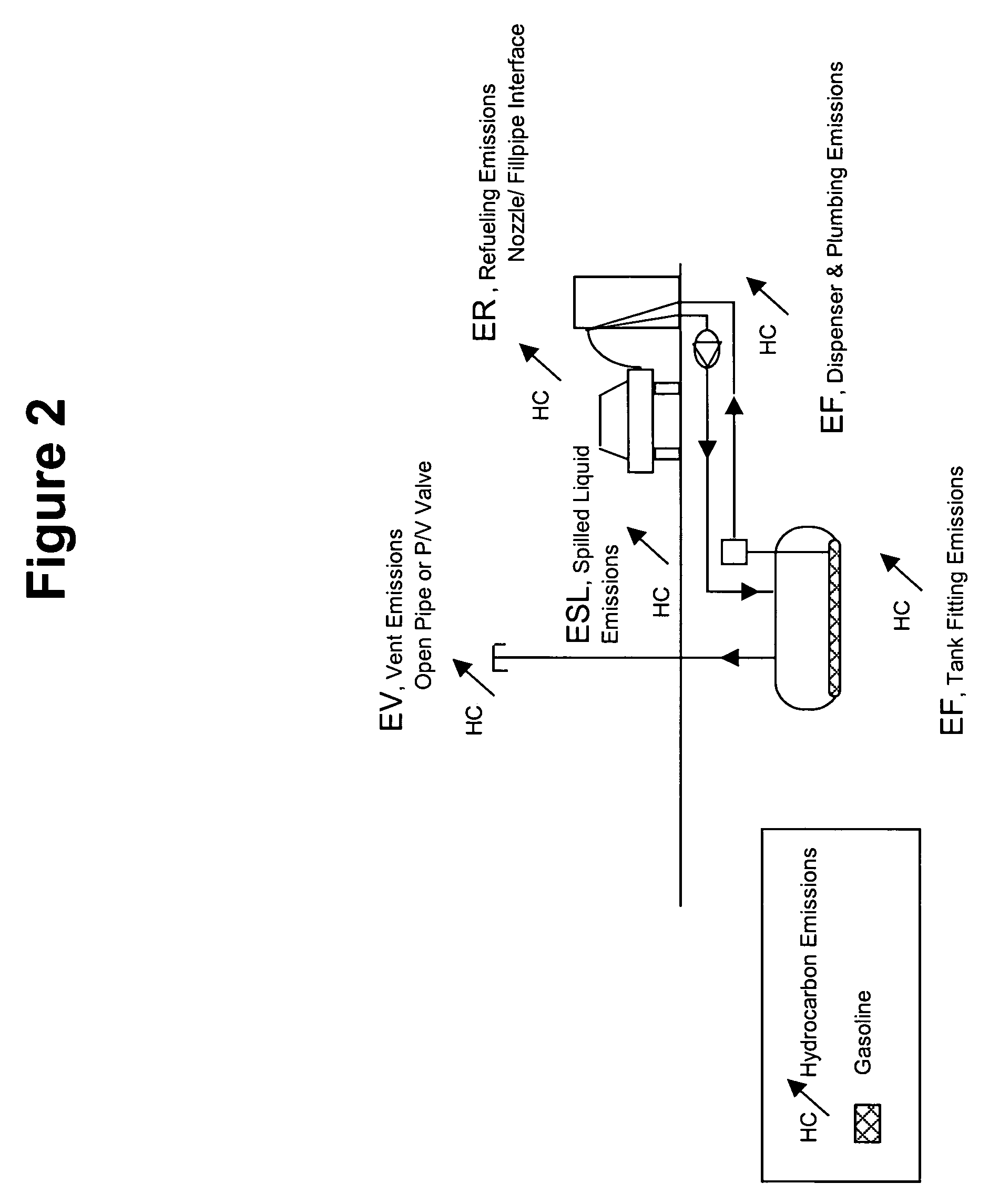Enhanced vapor containment and monitoring
a technology of vapor containment and monitoring, applied in the direction of liquid transfer devices, digital computer details, instruments, etc., can solve the problems of displacement loss, environmental hazard and negative impact on human health, and economic loss of retailers, so as to enhance the overall system, flexibility and vendor options
- Summary
- Abstract
- Description
- Claims
- Application Information
AI Technical Summary
Benefits of technology
Problems solved by technology
Method used
Image
Examples
Embodiment Construction
As seen in FIGS. 4-6, a refueling station storage tank system is equipped with a membrane system (1), a vacuum pump (2), an ATG console (3) and a data acquisition module (4). Two storage tanks (5) and (6) are shown. The selectively permeable membrane (1) was referenced previously and is shown connected to the combined vapor space or “ullage” of tanks (5) and (6). Tanks (5) and (6) are shown with their ullage spaces connected by conduit (7). (The figures show the tanks manifolded underground with individual vent lines; other piping combinations are contemplated as well). The combined ullage space is kept closed by the installation of p / v valves (8) and (9). In the United States, these valves have a typical setting of +3 inches water column and −8 inches water column. Such valves are commercially available from suppliers such as Husky, Hazlett Engineering and OPW Fueling Components. Also note in FIGS. 5 and 6 is a “front-end” vehicle vapor recovery system commonly known as a Stage II...
PUM
 Login to View More
Login to View More Abstract
Description
Claims
Application Information
 Login to View More
Login to View More - R&D
- Intellectual Property
- Life Sciences
- Materials
- Tech Scout
- Unparalleled Data Quality
- Higher Quality Content
- 60% Fewer Hallucinations
Browse by: Latest US Patents, China's latest patents, Technical Efficacy Thesaurus, Application Domain, Technology Topic, Popular Technical Reports.
© 2025 PatSnap. All rights reserved.Legal|Privacy policy|Modern Slavery Act Transparency Statement|Sitemap|About US| Contact US: help@patsnap.com



